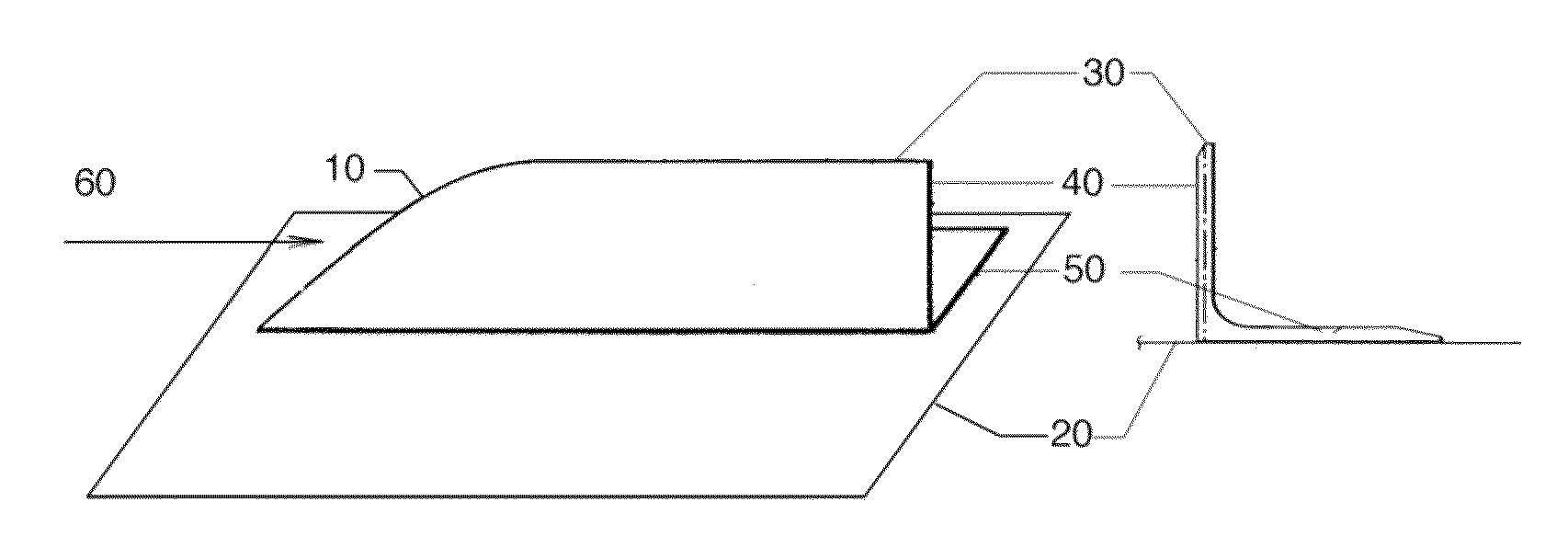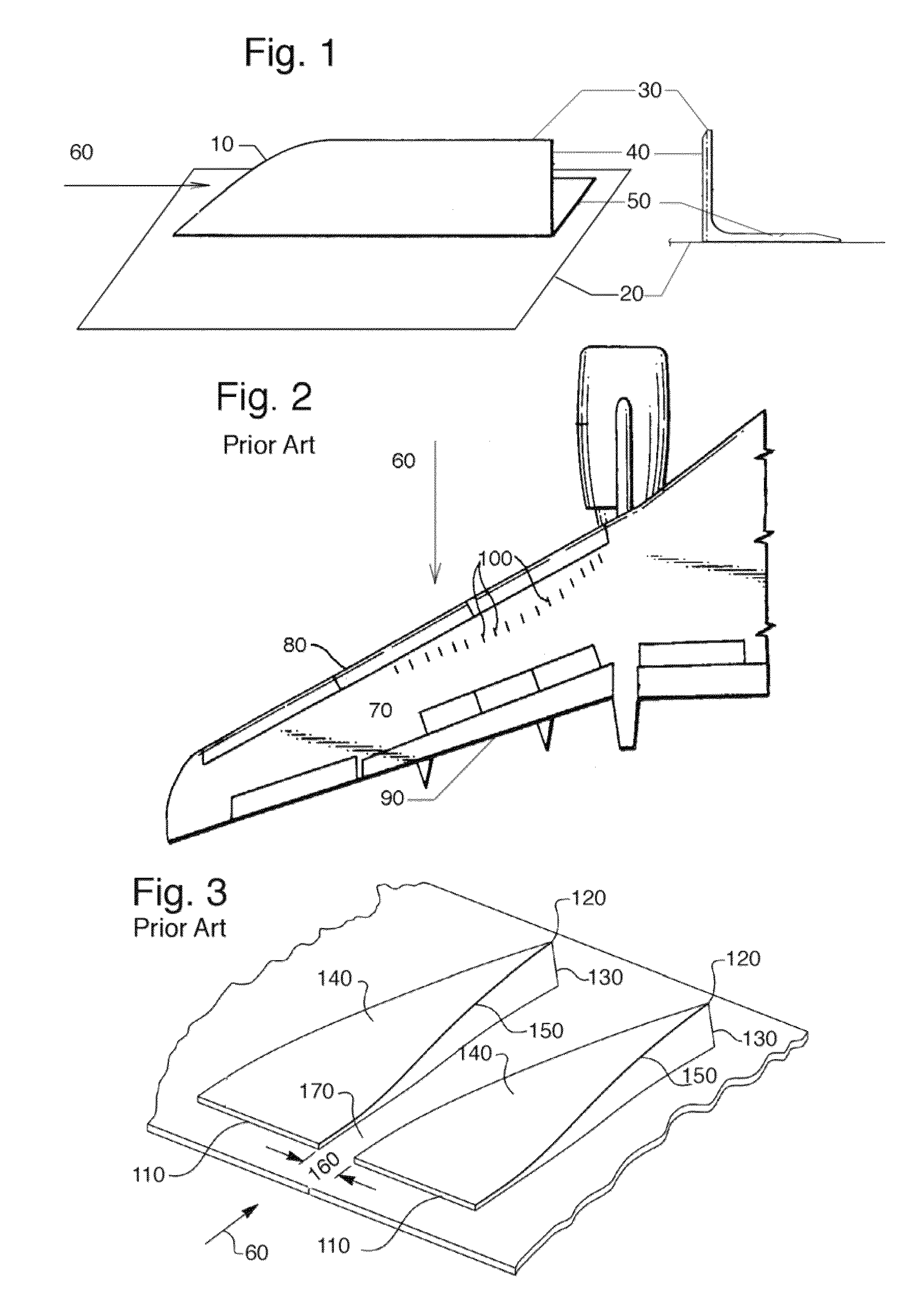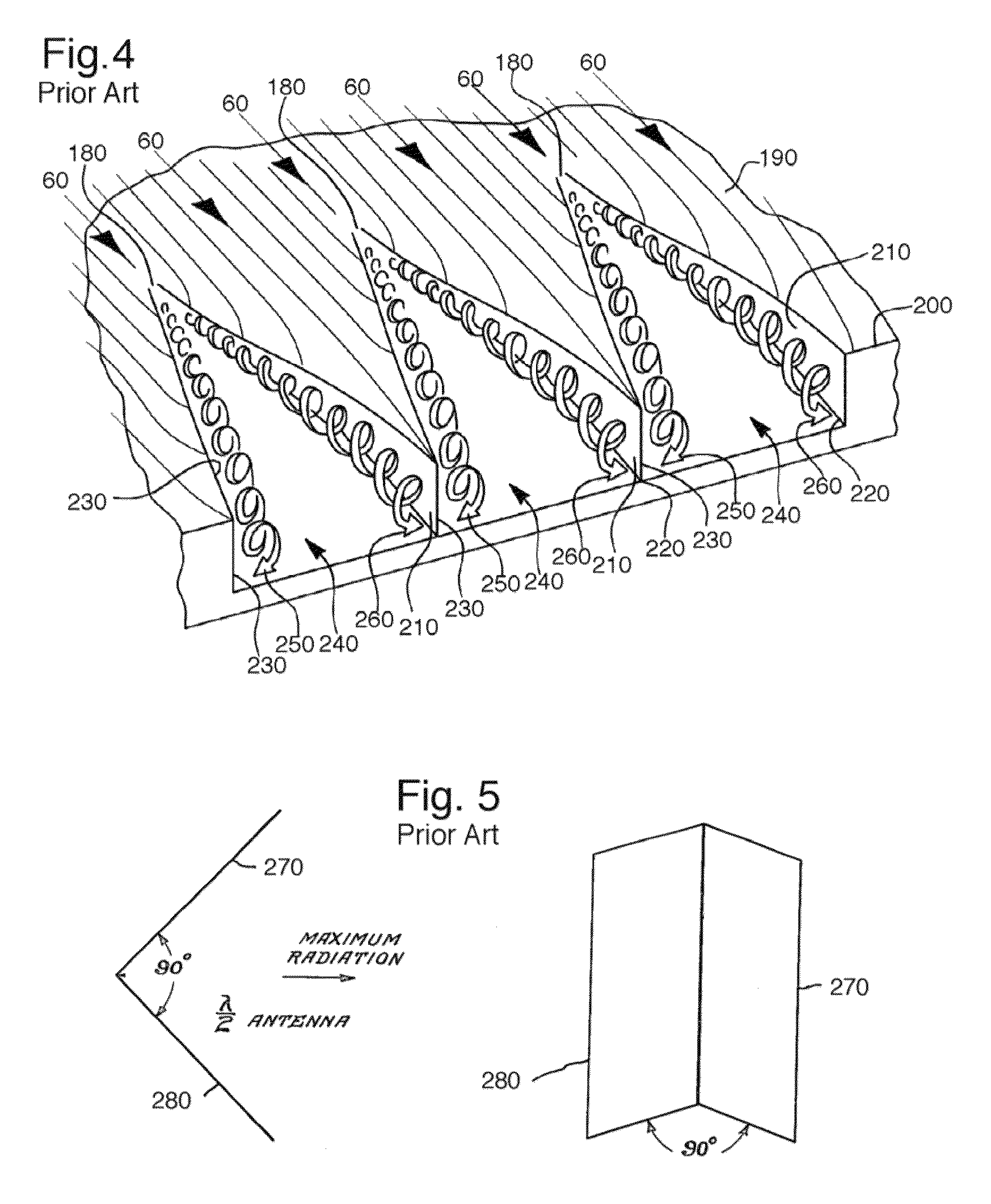Radar energy absorbing deformable low drag vortex generator
a generator and low drag technology, applied in the direction of electrographic process, air-flow influencer, instruments, etc., can solve the problems of radar cross-section spike generation, inability to conform to curved surfaces, etc., to reduce vibration, noise and buffet, the effect of reducing drag
- Summary
- Abstract
- Description
- Claims
- Application Information
AI Technical Summary
Benefits of technology
Problems solved by technology
Method used
Image
Examples
Embodiment Construction
[0051]This application claims priority to and the benefit of U.S. Provisional Patent Application Ser. No. 61 / 747,888 entitled, RADAR ABSORBING DEFORMABLE LOW DRAG VORTEX GENERATOR, filed Dec. 31, 2012, which is incorporated by reference herein in its entirety.
[0052]Starting with the Bf-110 Zerstörer of 1936, vortex generators of the configuration shown in FIG. 1 have been regularly used on a variety of aircraft for a variety of purposes. This conventional, rigid VG (10) has a vertical portion which is approximately normal to the aircraft surface (20) and either bonded, riveted or screwed in place. The upper edge (30) is set at a finite cant angle against the oncoming airflow and will peel a vortical structure as it separates at that edge. The vertical riser (40) is most often made from either aluminum or steel and integrated to a structural foot (50). The height of the rigid VG is typically set in accordance with its intended use and local boundary layer height. Clearly, prior art t...
PUM
 Login to View More
Login to View More Abstract
Description
Claims
Application Information
 Login to View More
Login to View More - R&D
- Intellectual Property
- Life Sciences
- Materials
- Tech Scout
- Unparalleled Data Quality
- Higher Quality Content
- 60% Fewer Hallucinations
Browse by: Latest US Patents, China's latest patents, Technical Efficacy Thesaurus, Application Domain, Technology Topic, Popular Technical Reports.
© 2025 PatSnap. All rights reserved.Legal|Privacy policy|Modern Slavery Act Transparency Statement|Sitemap|About US| Contact US: help@patsnap.com



